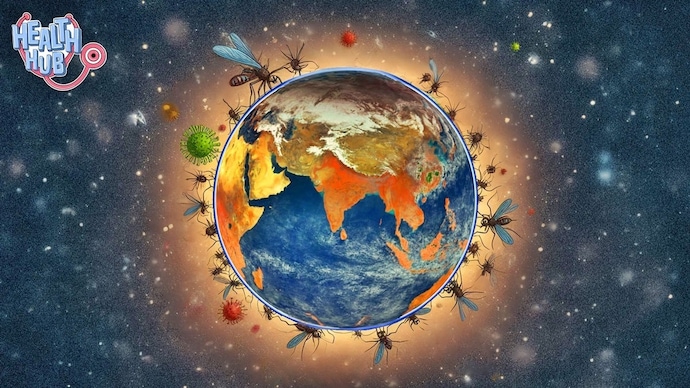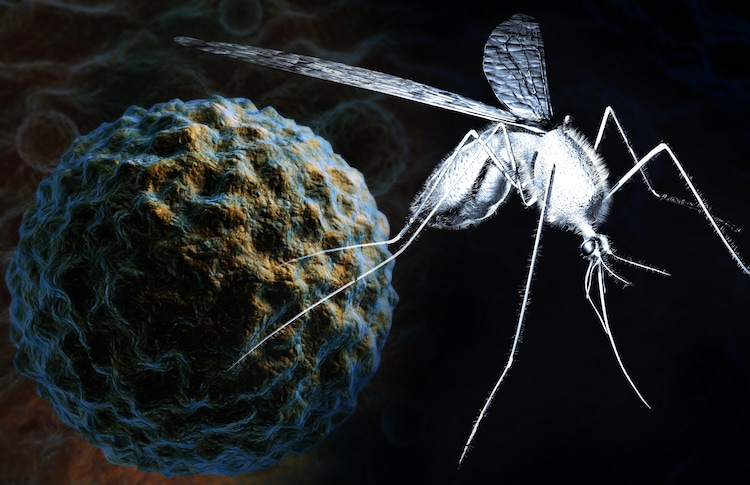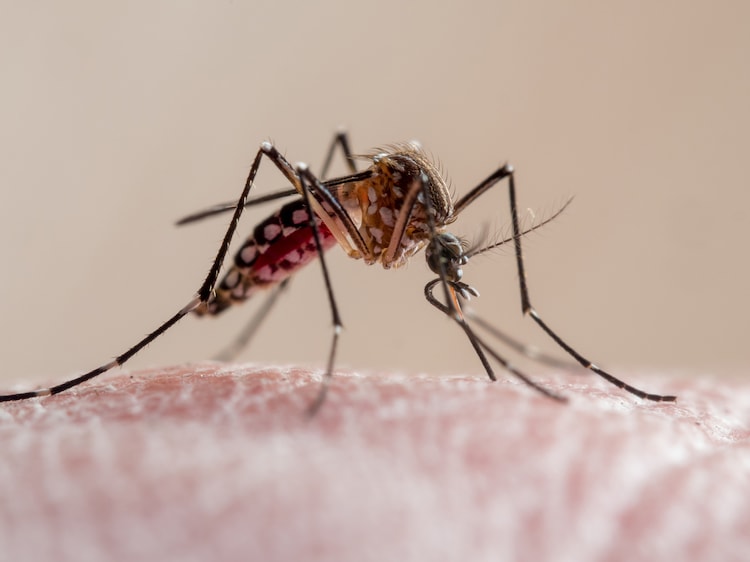How climate change is making dengue the next pandemic
Due to climate change, infectious diseases, especially dengue, are spreading to new areas, posing a serious threat to public health.

Climate change is acting as a catalyst for many infectious diseases, taking them to previously unaffected places. Disrupting the weather, planetary changes are happening very quickly and are having a direct impact on diseases, especially dengue.
The World Health Organisation (WHO) has warned that in 2023, dengue and chikungunya will spread beyond their previous geographic transmission areas.
Now half the world’s population is at risk of this disease.
Ankit Kumar, a post-doctoral fellow at Ashoka University, told IndiaToday.in that climate change is one of the major factors driving the increase in the number of Aedes mosquitoes across the world.
Ankit Kumar said, “Some statistical models have suggested that in the future we may see a poleward shift in the spatial distribution of Aedes mosquitoes. This could lead to Aedes-borne viruses entering new locations in both Europe and America. Different extents of climate change will impact the expansion of Aedes mosquitoes in the Northern Hemisphere differently.”
Is climate change making dengue an epidemic?
Dengue, a mosquito-borne viral infection spread primarily by Aedes aegypti and Aedes albopictus mosquitoes, thrives in warm and humid conditions. As global temperatures rise and weather patterns change, these mosquitoes are expanding their habitat, leading to an increase in dengue cases in temperate regions.
There has been an alarming increase in dengue cases in the Americas and Europe over the past decade. According to the European Centre for Disease Prevention and Control (ECDC), more than 10 million dengue cases and more than 5,000 dengue-related deaths have been reported in 80 countries since the beginning of 2024.

The Intergovernmental Panel on Climate Change (IPCC) has highlighted that higher temperatures and more rainfall create optimal breeding conditions for mosquitoes that spread dengue.
Research in Nature Microbiology suggests that by 2050, almost half the world’s population could be at risk of dengue, with significant increases in Europe and North America.
This estimate is due to the projected increase in global temperatures of 2°C, which will extend the active season and geographic range of mosquitoes.
In addition, extreme weather events associated with climate change, such as hurricanes and flooding, contribute to the spread of dengue.
These events lead to waterlogging, ideal for mosquito breeding, and also disrupt public health infrastructure, complicating disease control efforts.
Dengue disease is caused by one of four dengue viral serotypes of the Flavivirus genus. The disease manifests as mild self-limited dengue fever to severe dengue hemorrhagic fever and dengue shock syndrome.
Dr S Chakraborty, Senior Consultant Physician and Diabetes Specialist, Metro Multispeciality Hospital, Noida said, “Climate change and rapid urbanisation have led to increased temperature and rainfall and consequently increased the risk of dengue outbreaks. The South East Asia region, Indonesia, Bangladesh, Nepal and Thailand have reported higher number of cases and mortality compared to the corresponding period of 2023.”

Dengue is not endemic in Europe and reported cases are mainly travel-related. However, recent climate change has led to increased ambient temperature, humidity and rainfall which is increasing the transmission of the virus.
Cases have been reported from France, Italy, Portugal, Spain, and Croatia. Cyclical epidemics of arboviral diseases every 3 to 5 years have also been reported in the Americas region.
Temperature is an important determinant of mosquito development and virus growth, as well as their life cycle. Dr Chakraborty said that high temperature habitats in urban areas provide a suitable environment for the aquatic stages of the mosquito life cycle.
Why is dengue a public health crisis?
Dengue is also known as bone-breaking fever. This nickname is derived from the severe pain it causes in the muscles and joints. The pain is so intense that it feels as if the bones are breaking.
The term “breakbone fever” began to be used in descriptions of the disease in the 18th century, when physicians and patients described the pain as excruciating and compared it to the sensation of bones breaking.
Other symptoms of dengue include nausea, vomiting, abdominal pain, and diarrhea. In rare cases, the disease can lead to neurological complications, such as encephalitis (inflammation of the brain), meningitis (inflammation of the membranes covering the brain and spinal cord), and myelitis (inflammation of the spinal cord).
In some patients, it can affect liver function, causing increased liver enzymes, jaundice (yellowing of the skin and eyes) and hepatomegaly (enlarged liver). Heart and skin problems may also be seen.
Since the majority of dengue patients require hospitalization, the disease not only endangers lives but also impacts economic systems and harms the workforce.
Researchers have highlighted the dire economic consequences of the disease, caused by a virus spread by the bite of an infected Aedes mosquito.
“Both the agricultural and industrial sectors are being affected due to the disabling nature of dengue and absenteeism from work, especially in labour-intensive industries, thereby adversely affecting productivity,” Dr Nayani P. Weerasinghe, consultant microbiologist and senior lecturer at the University of Ruhuna in Galle, Sri Lanka, had earlier told news agency PTI.
What can be done?
Public health officials are urging increased surveillance, mosquito control programs and community awareness campaigns to reduce the impact of dengue in these new areas.
The most recent global event, the 2024 Paris Olympics, has been threatened by an outbreak of dengue, with experts calling the global event a potential “super spreader” of the disease.
To tackle the problem, France has deployed its “dengue detectives” to identify disease hotspots, locate mosquito eggs, set traps and help reduce the spread of the virus in cities.

Countries are joining hands in the fight against dengue, a major threat to public health. The United States Agency for International Development (USAID) and Takeda Biopharmaceuticals India Private Limited have launched a campaign to help school children in Maharashtra, Odisha and Uttar Pradesh prevent dengue.
However, according to Dr. Chakraborty, inadequate efforts have been made in vector surveillance and control, leading to increased incidence of severe forms of the disease worldwide.
“Careful urban planning, water and sanitation provision, solid waste management and community participation are all essential to control the disease in this era of climate change,” he said.
Investing in vaccine development is a vital step to stop the spread of dengue.
As the planet warms, the combination of climate change and infectious diseases like dengue is becoming a growing threat. Global cooperation is greatly needed to effectively tackle this emerging health crisis.





